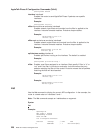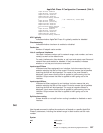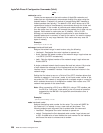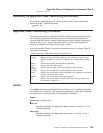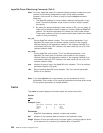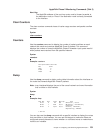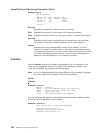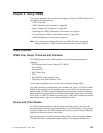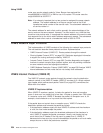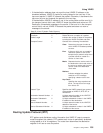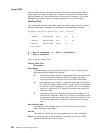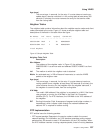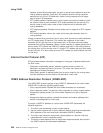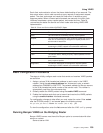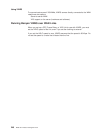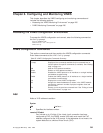
router as a service network node for Vines. Banyan has assigned the
range30800000 to 309FFFFF to IBM for use in its routers. This router uses the
range 30900000 to 3097FFFF.
Note: It is extremely important that no two routers be assigned the same network
address. The network address for a Banyan service node is the 32-bit
hexadecimal serial number of the service node. The subnetwork address for
all service nodes is 1.
The network address for each client node is generally the network address of the
service node on the same network. However, if a client node is on a LAN that has
more than one service node, it is assigned the network address of the service node
that responds first to the client node’s address assignment request. The subnetwork
address for each client node is a hexadecimal value of 8000 to FFFE.
VINES Network Layer Protocols
This implementation of VINES consists of the following four network layer protocols.
The next sections describe these protocols and their implementations.
v “VINES Internet Protocol (VINES IP)”. Routes packets through the network.
v “Routing Update Protocol (RTP)” on page 235. Distributes topological information
to support the routing services provided by VINES IP.
v “Internet Control Protocol (ICP)” on page 238. Provides diagnostics and support
functions to certain transport layer protocol entities, such as providing notification
on some network errors and topological conditions.
v “VINES Address Resolution Protocol (VINES ARP)” on page 238. Assigns VINES
internet addresses to client nodes that do not already have addresses.
VINES Internet Protocol (VINES IP)
The VINES IP protocol routes packets through the network using the destination
network number in the VINES IP header. VINES IP consists of an 18-byte network
layer header which prefixes each packet. Table 53 on page 235 summarizes the
fields within this header.
VINES IP Implementation
When VINES IP receives a packet, it checks the packet for size and exception
errors. A size error is a packet that is less than 18 bytes or greater than 1500 bytes.
If it contains a size error, VINES IP discards the packet. An exception error is, for
example, a bad checksum or a hop count that has expired.
If the packet does not contain size or exception errors, VINES IP checks the
destination address and forwards the packet as follows:
v If the destination address equals the local VINES IP address and the checksum
is valid, the local node accepts the packet.
v If the destination address equals the broadcast address and the checksum is
valid, VINES IP accepts the packet, processes it locally, and checks the hop
count field of the IP header. If the hop count is greater than 0, VINES IP
decrements the hop count by one and rebroadcasts the packet on all local media
except the one on which the packet was received.
Using VINES
234
MRS V3.2 Protocol Config Ref Vol 2



